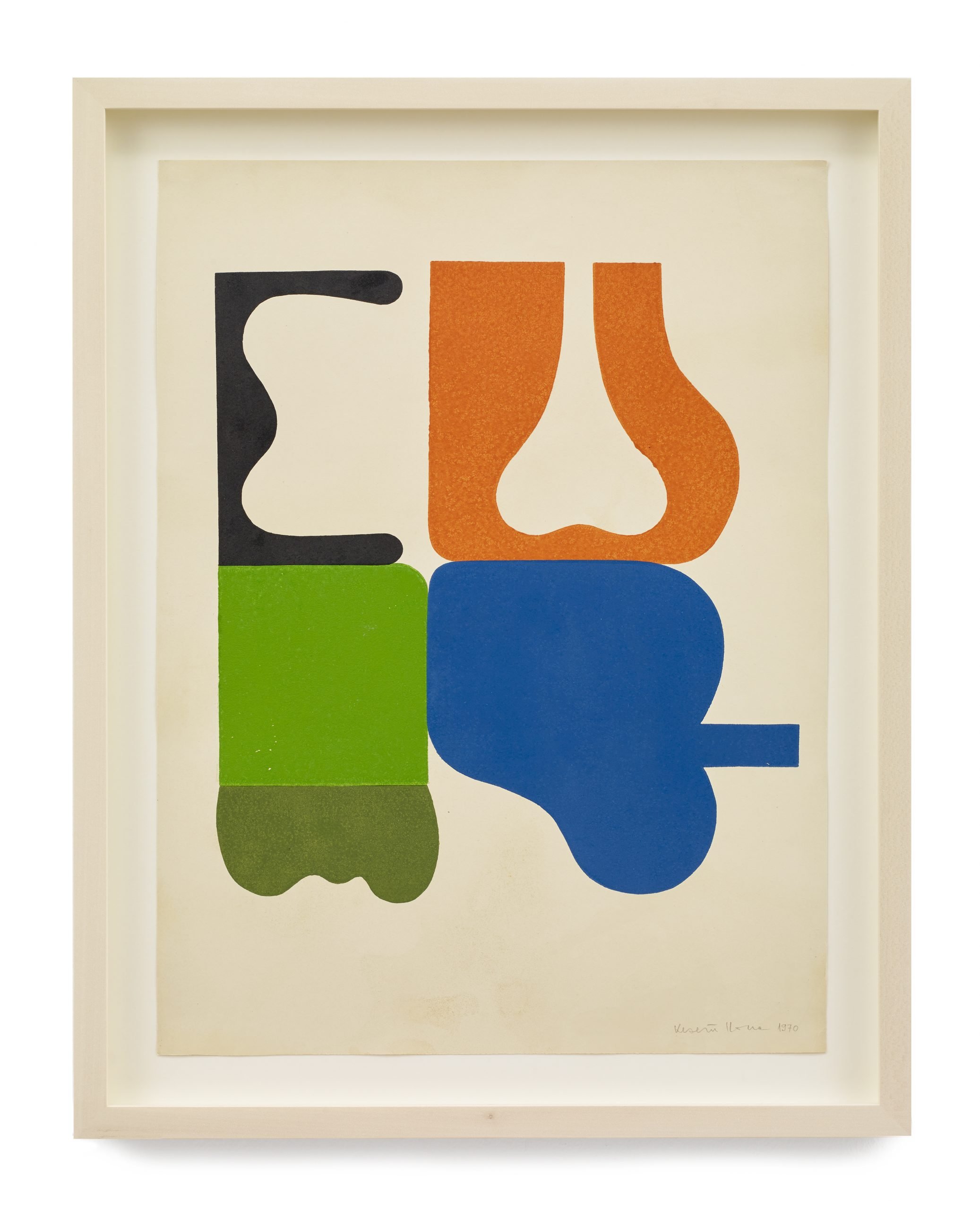
Every month, hundreds of galleries add newly available works by thousands of artists to the Artnet Gallery Network—and every week, we shine a spotlight on one artist or exhibition you should know. Check out what we have in store, and inquire for more with one simple click.
What You Need to Know: This week, Stephen Friedman Gallery presents the work of Hungarian artist Ilona Keserü (b. 1933) at the Frieze Masters art fair in London. Featuring pieces that highlight Keserü’s decades-long engagement with abstraction, the presentation includes a variety of mediums that the artist employed—from oil on cardboard to stitched linen—emphasizing the experimental, exploratory nature of her practice. Keserü has lived, worked, and studied primarily in and around Budapest for her entire career, and the cultural and artistic traditions of Hungary have played a major role in the development of her personal style. Additionally, much of her work can be tied back to modes of rebellion against the prescriptive aesthetics pushed during the Communist period, when Hungary was under the control of the USSR. With a concentration on artwork produced in the 1970s and 1980s, the gallery’s display offers and in-depth, multifaceted look at the development of Keserü’s practice during a distinctive period in both the artist’s career and geopolitically.
Why We Like It: In the early 1960s, Keserü worked as an illustrator, and later as a set and costume designer. The works presented by the gallery reflect the artist’s professional background through the lens of the prevailing modes of abstraction in the West—despite the fact Keserü was working from behind the Iron Curtain. The illustrative quality of her work is particularly clear as is the heavy use of hard-edge painting techniques in many of her compositions, such as in Pendant Object B-4 (1981), where three starkly outlined areas of paint could be interpreted as the study of pure shape and color. Alternatively, the forms could represent highly abstracted tables or headstones—a recurring motif in Keserü’s work. Elsewhere, as in Colour-Mirror (1982), the depiction of space is made literal through the inclusion of a mirror, with bands of gradient color superimposed on top—exemplifying both Keserü’s fearless use of materials and refusal to be confined by traditional mediums like paint on canvas, or sculpture made of clay or stone.
According to the Gallery: “With a career extending over 70 years, Keserü is one of Hungary’s leading post-war abstract artists. This exhibition focuses on works from the 1970s and early 1980s, and demonstrates the breadth of her practice, spanning multiple disciplines including painting, sculpture, and work on paper. Keserü’s distinctive approach combines references to Hungarian folk culture with Western European Modern art and historic architecture. The artist’s organic abstract style developed in defiance of Soviet rule, following the Hungarian revolution of 1956. Her liberal use of forms and bold palette expressed a refusal to conform and an affinity with ideals beyond the Iron Curtain.”
See more work by Ilona Keserü below.
Ilona Keserü, Big Earth, Water (1985). Courtesy of the artist; Stephen Friedman Gallery, London; Kisterem, Budapest. Photo: Stephen White and Co.
Ilona Keserü, Colour-Mirror (1982). Courtesy of the artist; Stephen Friedman Gallery, London; Kisterem, Budapest. Photo: Stephen White and Co.
Ilona Keserü, Pendant Object B-2 (1981). Courtesy of the artist; Stephen Friedman Gallery, London; Kisterem, Budapest. Photo: Stephen White and Co.
Ilona Keserü, Pendant Object B-4 (1981). Courtesy of the artist; Stephen Friedman Gallery, London; Kisterem, Budapest. Photo: Stephen White and Co.
Ilona Keserü, Accord A (1976). Courtesy of the artist; Stephen Friedman Gallery, London; Kisterem, Budapest. Photo: Stephen White and Co.
Ilona Keserü, Colour Column (1974). Courtesy of the artist; Stephen Friedman Gallery, London; Kisterem, Budapest. Photo: Stephen White and Co.
Ilona Keserü’s work is presented by Stephen Friedman Gallery at Frieze Masters, London, October 12–October 16, 2022.